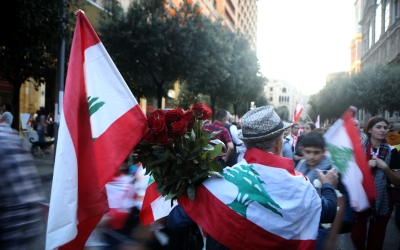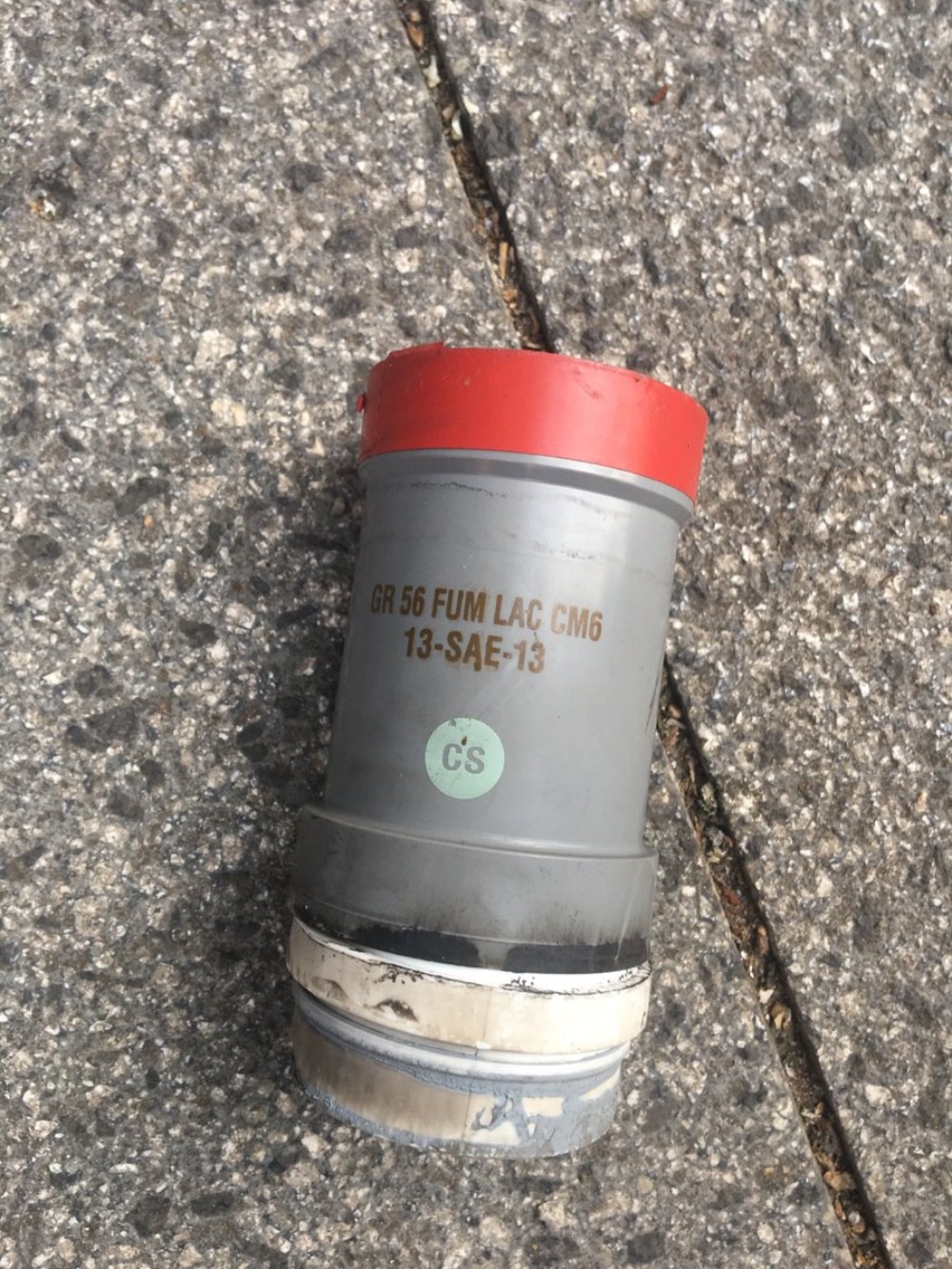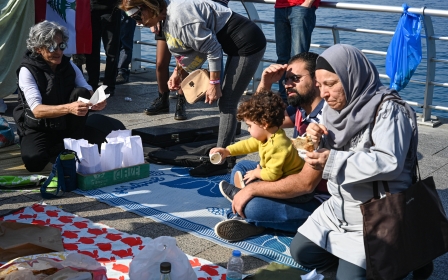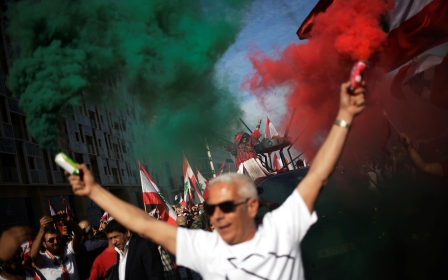How Lebanese protesters are targeted by French military-grade tear gas
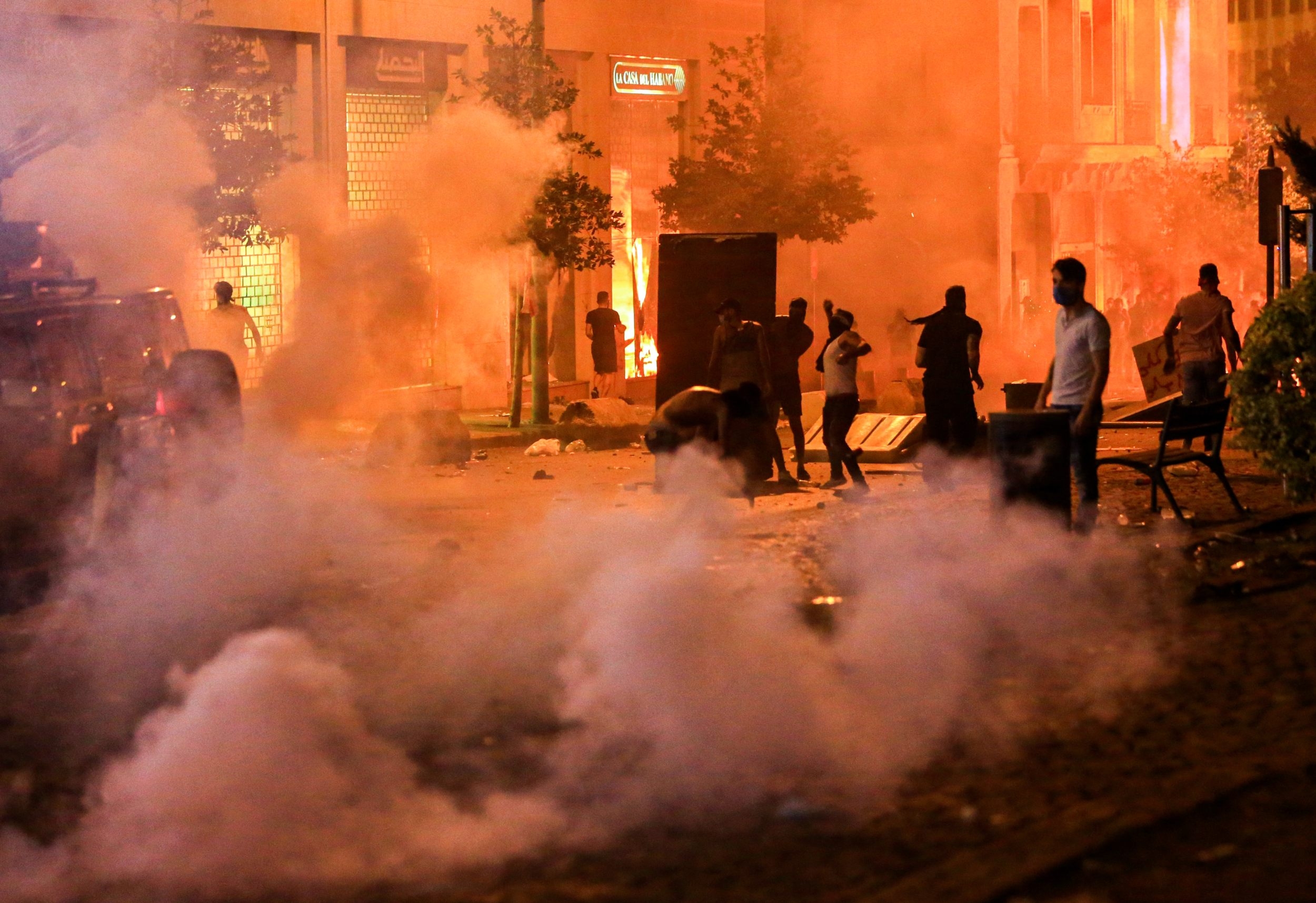
With Lebanon’s popular uprising now in its second month, protesters around the country remain resolute in their demands for an overhaul of the corrupt and sectarian political system.
The response of the Lebanese security apparatus to the largely peaceful protests has been praised for its relative restraint, particularly considering the routinely vicious crackdowns on popular movements in countries such as Iraq, Egypt and Iran.
But while both Lebanon’s Internal Security Forces (ISF) and the army have publicly expressed their commitment to protecting the right to peaceful assembly, there have been cases of excessive use of force against peaceful protesters.
Lebanese forces have been reported to have used batons, sound bombs and both rubber-coated and live bullets against protesters - but no method has been more consistently used than tear gas.
Speaking with protesters and human rights advocates on the ground, Middle East Eye has been able to determine that much of the tear gas used by Lebanese forces has been manufactured by French organisations, with some confirmed to be military-grade.
The revelation raises questions about disproportionate use of force to quell the protests, as well as the implications of foreign aid to security forces in times of internal strife.
Excessive force
On the evening of 18 October, the habitually empty Riad al-Solh Square in downtown Beirut was filled with a crowd of angry protesters, chanting for the downfall of the Lebanese government in a tense standoff with riot police.
Lebanon’s uprising, often dubbed the “October Revolution”, had begun just the night before. Fearing further austerity measures and a worsening economic crisis, protests broke out in Beirut after the cabinet passed a new series of regressive taxes, including on calls made on applications like WhatsApp.
Overnight, the protests spread across the country, with demonstrators sparking fires and setting up roadblocks.
On that second day, thousands of protesters stood in front of a line of riot police officers on the narrow El Amir Bashir street leading to Riad al-Solh Square. Aside from an area on the flanks in the front, all side streets were closed off by the Lebanese army or by construction site barriers on that stretch of road, effectively throttling the crowd.
With tensions running high, protesters in the front rows hurled some firecrackers and plastic water bottles at the police. Despite this, Human Rights Watch (HRW) researcher Aya Majzoub told Middle East Eye that the protests had appeared to be “overwhelmingly peaceful”.
Sometime after 7pm, without warning, security forces fired tear gas canisters into the crowd, causing a stampede. Of the 18 eyewitnesses present that night who spoke to MEE, many described the tear gas canisters falling on them “like rain”.
'It didn’t seem to be a legitimate law enforcement objective to fire at demonstrators while they were already fleeing'
- Aya Majzoub, Human Right Watch researcher
Eyewitness testimonies and analysis of video footage from different news agencies revealed that at least 10 tear gas canisters - each capable of covering 800 to 1,000 square metres and three to five metres high in noxious fumes - were fired towards the protesters that evening, including while they were running away.
Demonstrators panicked as thousands tried to flee the narrow street. The claustrophobic environment caused by the road closures, coupled with the noxious fumes, meant that many people - including children and elderly - struggled to breathe, vomited or even fainted.
“People were falling onto one another,” one eyewitness, who requested anonymity, told MEE. “Some were trying to carry people who passed out to take them to safety.”
Another eyewitness said they saw a police officer kick a protester who fell over, saying, “go follow your friends”.
As some protesters tried to return to the square, police and soldiers resorted to batons, rubber bullets, and more tear gas - in what Human Rights Watch described as a show of “excessive force”. The situation further escalated and turned into clashes between rioters and riot police officers.
While the ISF stated that 52 of their officers were wounded that night, the number of casualties on the side of the protesters was never finalised. However, the Lebanese Red Cross reported needing six ambulance units to transfer all the wounded to medical facilities for treatment.
The ISF announced that some 70 protesters were arrested that night alone, though activists claim that the number was closer to 300.
“They kept firing additional rounds of tear gas at people already running away,” Majzoub said. “So it didn’t seem to be a legitimate law enforcement objective to fire at demonstrators while they were already fleeing.”
For Majzoub, tear gas, “like any law enforcement method” should have been used proportionally to the threat constituted by demonstrators.
Renowned British toxicologist and professor of environmental toxicology at the University of Leeds Alastair Hay told MEE that the amount of gas used in that situation appeared to be “excessively high”.
“Those closest to the release…we’re talking about very high concentrations of the agent,” Hay added. “[It could] cause quite serious problems for people.”
Yellow Vests connection
The night of 18 October was but one dramatic instance among many of Lebanese forces’ use of tear gas on demonstrators during the uprising.
Photos taken and obtained by MEE have since revealed that the tear gas used that night in Beirut - and likely during many other subsequent attempts to quell protests - was produced by French company SAE Alsetex.
Alsetex is a subsidiary of multinational group Etienne Lacroix, which has also supplied tear gas to the Bahraini government. Its tear gas was also reportedly used against French protesters from the “Yellow Vests” movement.
The connection was confirmed by a representative of the London-based Omega Research Foundation, who told MEE that the canisters appeared to be CM6 grenades and G1 "random motion" tear gas grenade.
Both the CM6 and G1 grenades contain six capsules that split after they are launched, enabling the tear gas to cover more ground.
According to Alsetex promotional material obtained by MEE, the G1 grenade’s “random motion” feature also means that the capsules cannot be caught or thrown back by protesters.
According to Amnesty International, a “typical” tear gas grenade for police usually has a diametre of 37 millimetres and weights between 25 to 50 grammes. By contrast, the CM6 has a 56-millimetre diametre and weighs 250 grammes, while the G1 is 56 millimetres in diametre and weighs 350 grammes
The CM6, meanwhile, has nearly three times more CS agent - 2-chlorobenzalmalononitrile, the main component of tear gas - per canister than the G1, with 13 percent concentration compared to five percent.
The CM6 is listed by Alsetex as a military-grade A2 level weapon under French nomenclature.
Category A weapons, including sub-category A2, are considered weapons and equipment designed for war or armed conflict. Less lethal weapons for riot control, including tear gas, are categorised by France to fall in the lower echelons of Category B.
The G1’s category was not mentioned in the promotional material seen by MEE.
France's contradictory approach
France, like much of the international community, has approached the ongoing uprising with caution.
On 22 October, France issued its first statement on the uprising, with the Ministry of Foreign Affairs calling for protests to remain peaceful, while urging the Lebanese government to implement “reforms needed to revive the Lebanese economy” and provide public services that benefit citizens.
That same day, French Ambassador to Lebanon Bruno Foucher met with Lebanese Prime Minister Saad Hariri, saying it was important that the premier's cabinet follow up on reforms “without delay” while maintaining protesters' right to peaceful assembly.
Following Hariri’s resignation on 29 October, effectively dissolving the cabinet, an official statement from Foreign Minister Jean-Yves Le Drian called for a new government to be formed swiftly, while expressing trust in Lebanon’s political leaders ability to promote national unity and security - even as demonstrators denounced the political class’s grip on power at citizens’ expense.
The French government has generously supported the ISF over the years, most recently in February 2019 when it donated 400,000 euros’ ($440,500) worth of equipment.
In 2018, Hariri announced that France had pledged a further 400 million euros ($440mn) in aid to both the ISF and the Lebanese army.
France’s support of Lebanese state forces - and Paris’s long history of interference in Lebanon, including during the Mandate Era in the first half of the 20th century - has left demonstrators wary of any French intervention in the current uprising.
'Applications for export licences for classified materials [...] are dealt with extremely carefully'
- French diplomatic source
Protesters gathered at the French embassy in the Lebanese capital on 12 November to reject any and all foreign interference following a trip by French envoy to the Middle East and North Africa Christophe Farnaud - although the latter said the goal of his visit was not to “impose solutions or names” but to “see what the different sides are considering.”
The use of French-made military-grade tear gas in the context of a largely peaceful popular movement further puts France in a delicate position regarding its stance on the October Revolution.
Responding to an MEE request for comment on the use of CM6 tear gas grenades against Lebanese protesters, a French diplomatic source said: “Applications for export licences for classified materials for the purposes of law enforcement, particularly against the backdrop of a large-scale demonstration, are dealt with extremely carefully and are examined by the French authorities on a case-by-case basis in line with their international commitments.”
The source did not respond to questions regarding what actions French authorities would take should the use of donated equipment violate Paris’s international legal commitments.
However, they did note that the most recent export licences for Lebanon dated back to several months - prior to the protests.
For Hay, the British toxicologist, “every police force has riot control agents, and they’re permitted to use them under international law”.
However, he warned of cases in which “many countries use them excessively”.
The toxicologist encouraged doctors and others on the ground to “record and document” the continued use of tear gas against protesters in Lebanon.
Such data, he said, could “in turn […] be used to put pressure on authorities to restrict how they use it”.
On 26 November, seven UN special rapporteurs of the Human Rights Council issued a statement expressing their concern regarding security forces’ excessive use of force against protesters, including “large quantities of tear gas”, and called on Lebanese authorities to explain their measures and investigate these incidents.
But it remains to be seen whether Lebanon, or France, will take note.
This article is available in French on Middle East Eye French edition.
Middle East Eye delivers independent and unrivalled coverage and analysis of the Middle East, North Africa and beyond. To learn more about republishing this content and the associated fees, please fill out this form. More about MEE can be found here.


